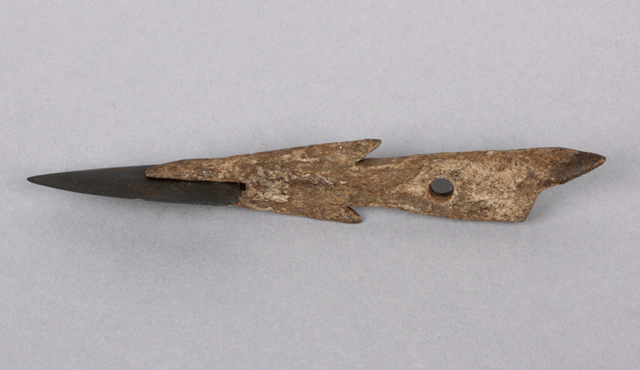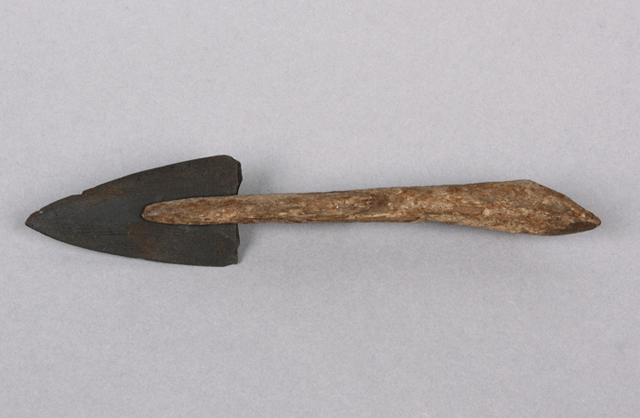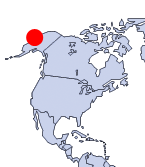




43.3.23, bone harpoon head with slate point
Inupiaq (Eskimo), western coastal Alaska; roughly A.D. 500?
Frank Hibben collectionn
Photograph by B. Bernard
Most stone points are made of materials, such as chert, that can be flaked to create a sharp edge. Lacking such raw materials, local people sometimes ground the edges of pieces of slate to achieve the same result.
Of course, the harpoon head is only part of a complicated hunting weapon. To see a diagram of the entire "weapon system," click on the thumbnail immediately below.
Click on the thumbnails below to see other examples of harpoon heads, along with a carefully decorated harpoon foreshaft. At first glance the variety of harpoon heads is bewildering—but carefully studying that variety is what allows archaeologists to define changes in technology and style over time and space. What most Americans call "the Eskimos" are a multiplicity of groups, which can be identified in part by variations in their artifacts.
To return to the thumbnail on the Tools page, click here. To return to the thumbnail on the North by Southwest learning path, click here.
All content copyright © Maxwell Museum of Anthropology, University of New Mexico. High-resolution versions of photographs may be ordered from the Maxwell Museum's photo archives. Please make note of the catalogue numbers. For more information please visit the photo archives web page
Page last revised on January 27, 2012. Please report problems to toh@unm.edu